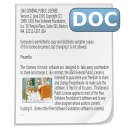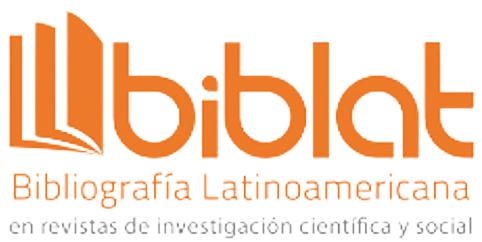Data Architecture Standard Review Component for SQLite Database Manager
Abstract
Concern for the quality of software-based systems has grown as software is integrated into every aspect of our lives. With the increase in the number of users and the data stored, more robust and secure databases are necessary. Quality control testing has progressed systematically from manual to automated applications. The Information Technology for Defense Company has the Center for Quality Standards and Security in charge of certifying and technically evaluating computer products, guaranteeing their quality. Currently the database review process in the SQLite manager is manual, making this process difficult, where there may be a margin of error due to the amount of checks that must be reviewed. The present work aims to develop a data architecture review component for the SQLite management server. For this, a study of a homologous database management system is carried out, the tools for testing existing databases and how a database architecture standard is formed. Functional tests are carried out on the component to verify its correct operation. Finally, a component integrated o the Zeolides framework is obtained, capable of automatically checking the architecture of the databases of the SQLite manager in the computer applications developed in the company.
Downloads
References
Y. De La Paz Milán, «Desarrollo de un componente de monitoreo para el Servidor de Gestión PostgreSQL,» Universidad de las Ciencias Informáticas, La Habana, 2011.
M. Ruiz Gómez, «Creación de una base de datos estandarizada para la flota eólica de Brasil,» 2017.
XETID, «Proceso de Desarrollo de Software v1.7,» 2017.
M. Guanche Cañizares, D. Pérez Rojas y J. Reyes Pérez, «CEAD Componente de revisión de arquitectura de datos de la Empresa de Tecnología de la Información para la Defensa (XETID),» 2017.
O. Tatés Pérez, «Implementación de una aplicación movil Android para el seguimiento de asistencia de los estudiantes de la CISICI, utilizandio Android Studio,» Ibarra, Ecuador, 2018.
D. Almonacid Inzunza, «Comparación entre gestores de bases de datos relacionales,» 2016. [En línea]. Available: http://repositoriodigital.ucsc.cl/handle/25022009/1092.
M. Ramos, A. Ramos y F. Montero, «Sistemas Gestores de Bases de Datos,» 2016.
R. Marín, «Los gestores de bases de datos (SGBD) más usados,» 2019.
D. González Márquez, «Creación de una práctica de bases de datos relacionales con SQLite,» 2019. [En línea]. Available: https://repositorioinstitucional.ceu.es/bitstream/10637/10242/1/Creacion_DavidGonzalez_2019.pdf.
P. López Herrera, «Comparación del desempeño de los Sistemas Gestores de Bases de Datos MySQL y PostgreSQL,» 2016.
B. Gros, A. Escofet y M. Marimón, «The design patterns as tools to guide the practice of teachers,» Revista Latinoamericana de Tecnología Educativa, vol. 15, nº 3, pp. 11-25, 2016. DOI: https://doi.org/10.17398/1695-288X.15.3.11
Cognodata, «Arquitectura de datos: la base de una estrategia diferenciadora,» [En línea]. Available: https://www.cognodata.com/blog/arquitectura-datos-estrategia-diferenciadora/.
J. Sánchez Asenjo, «Gestión de Base de Datos. Sistemas gestores de bases de datos,» Administración de Sistemas Informáticos en Red, 2008.
D. Mera Mero y C. Villamarin Zambrano, «Categorías de beneficios de estándares y procedimientos,» 2012.
International Organization for Standardization, «NORMAS ISO 25000,» 2005.
XETID, «Tecnologías y Ciberseguridad. Marco de Trabajo para el Desarrollo de Aplicaciones Web (Zeolides),» 2019.
Copyright (c) 2021 Innovation and Software

This work is licensed under a Creative Commons Attribution 4.0 International License.
The authors exclusively grant the right to publish their article to the Innovation and Software Journal, which may formally edit or modify the approved text to comply with their own editorial standards and with universal grammatical standards, prior to publication; Likewise, our journal may translate the approved manuscripts into as many languages as it deems necessary and disseminates them in several countries, always giving public recognition to the author or authors of the research.
























